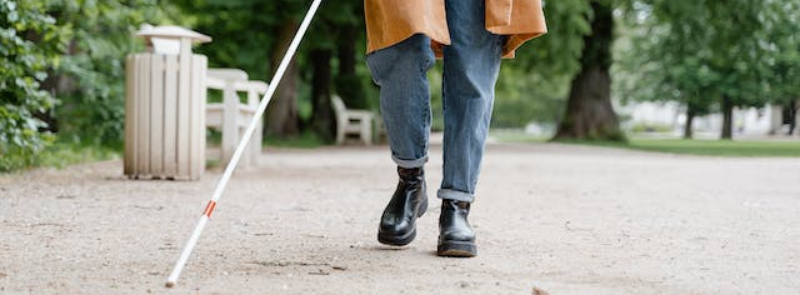
When It Occurs
Every October 15th
Timeline
Days Passed (760)
# Hashtags
#WhiteCaneSafetyDay #PublicSafety
Every October 15 marks National White Cane Safety Day, a day dedicated to advocating for and educating about the White Cane Law. Since 1964, this day has been instrumental in promoting safe and inclusive communities for individuals with vision loss or blindness.
The White Cane Law actively supports the year-round independence of people in the blind and visually impaired community, fostering a sense of empowerment and enhancing public safety. Across the state of Wisconsin, thousands of individuals who are blind or visually impaired rely on a white cane for safe mobility and travel.
History
- Origins: White Cane Safety Day was first proclaimed by President Lyndon B. Johnson on October 6, 1964. The day was established to celebrate the achievements of people who are blind or visually impaired and to recognize the white cane as a symbol of their independence.
- Legislation: The day is part of a broader effort to support the rights of individuals with disabilities, including the White Cane Law, which requires drivers to yield the right-of-way to blind pedestrians carrying a white cane or using a guide dog.
Significance
White Cane Safety Day holds significant importance for several reasons:
- Empowerment: It empowers individuals who are blind or visually impaired by recognizing their ability to lead independent and fulfilling lives.
- Awareness: It raises public awareness about the challenges faced by individuals with visual impairments and promotes understanding and respect.
- Safety: It emphasizes the importance of the white cane as a tool for safe and independent navigation in the community.
Celebrations and Activities
-
Public Awareness Campaigns:
- Educational Workshops: Organizations and advocacy groups host workshops to educate the public about the significance of the white cane and the experiences of individuals who are blind or visually impaired.
- Media Campaigns: Utilize social media, television, and print media to share stories, facts, and information about White Cane Safety Day.
-
Community Events:
- Parades and Walks: Organize parades or walks where participants use white canes to raise visibility and awareness.
- Demonstrations: Hold demonstrations to show how the white cane is used and to highlight the skills of individuals who are blind or visually impaired.
-
School Programs:
- Classroom Activities: Schools can incorporate activities and lessons that teach students about blindness, visual impairments, and the use of the white cane.
- Guest Speakers: Invite individuals who are blind or visually impaired to speak about their experiences and the importance of the white cane.
-
Legislative Advocacy:
- Policy Discussions: Engage in discussions with policymakers to advocate for better laws and policies that support the rights and safety of individuals with visual impairments.
- Proclamations: Encourage local governments to issue proclamations recognizing White Cane Safety Day.
-
Resource Fairs:
- Information Booths: Set up booths that provide information about services, technologies, and resources available to individuals who are blind or visually impaired.
- Demonstrations of Assistive Technology: Showcase assistive technologies that help individuals with visual impairments navigate their environments more effectively.
The White Cane: Symbolism and Use
-
Symbol of Independence:
- The white cane is a powerful symbol of independence for individuals who are blind or visually impaired, enabling them to navigate their surroundings confidently and safely.
-
Types of White Canes:
- Long Cane: Used for detecting obstacles and changes in the walking surface.
- Guide Cane: Shorter and used for basic detection of obstacles.
- Support Cane: Provides physical stability and support in addition to detecting obstacles.
- Identification Cane: A lightweight cane used to signal the user’s visual impairment to others.
-
Techniques for Use:
- Two-Point Touch: Moving the cane from side to side in an arc to detect obstacles.
- Constant Contact: Keeping the cane in contact with the ground to feel surface changes.
- Diagonal Technique: Holding the cane diagonally across the body to protect the user’s front.
Safety and Legal Considerations
-
White Cane Laws:
- These laws vary by state but generally require motorists to yield the right-of-way to pedestrians using a white cane or guide dog. They also promote the rights of individuals who are blind or visually impaired to move about freely and safely in public spaces.
-
Driver Awareness:
- Educating drivers about the importance of recognizing and yielding to individuals using white canes or guide dogs is crucial for ensuring the safety of visually impaired pedestrians.
-
Accessibility:
- Advocating for accessible environments, such as tactile paving at crosswalks, audible traffic signals, and accessible public transportation, enhances the mobility and safety of individuals who are blind or visually impaired.
Conclusion
White Cane Safety Day is a vital observance that promotes the independence, safety, and rights of individuals who are blind or visually impaired. It serves as an opportunity to educate the public, advocate for improved policies, and celebrate the achievements of those who use the white cane. By raising awareness and fostering understanding, White Cane Safety Day helps create a more inclusive and accessible society for everyone.


